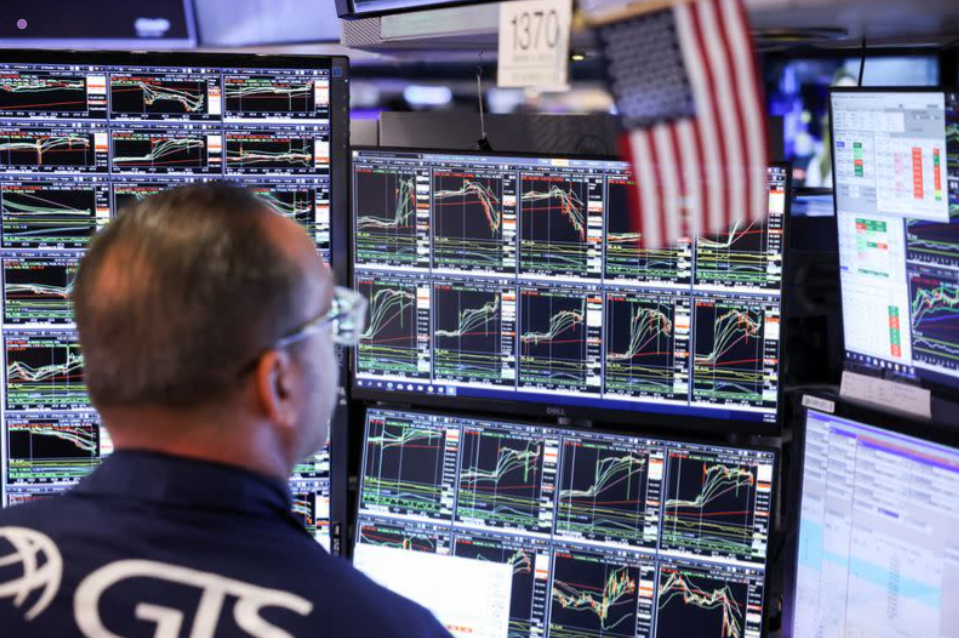Social media was a major factor in how fans consumed the Paris Olympics, with videos, commentary and viral moments racking up engagement in the billions.Getty Images
When sports journalist Shireen Ahmed thinks about covering the 2024 Olympics, one moment stands out: a video she captured on her phone of her and her colleagues at CBC taken just as the Canadian men’s team won the 4x100m relay.
“I was in the office [in Toronto] with my colleagues and we all stopped to watch,” she says. “It took off like crazy. People really loved watching how we were covering the Olympics. It just drew people in, because [it let them] see what we do, and people are really fascinated by that. It was a cool way to say, ‘This is what we do.’”
That wasn’t the only viral moment from last year’s Games, of course. In fact, Ahmed says she and colleagues used social media to cover the Olympics like never before. Some of the games’ most viral moments took off owing to media outlets’ or individual journalists’ posts, including photos of Yusuf Dikec, the Turkish shooter who went viral for his ultracasual shooting stance. (He took home a silver medal in the mixed team 10-metre air pistol event.) Ditto American gymnasts Simone Biles and Jordan Chiles bowing to Brazilian Rebeca Andrade after she took gold in the women’s floor final, and Australia’s Rachael Gunn (a.k.a. Raygun), whose awkward breakdancing captured the internet’s attention – though not always in a good way.
These moments had a huge impact on how fans consumed the events. According to the International Olympic Committee, around five billion people – more than half the world’s population – followed the Paris Games. What’s more, the organization reported in December that “digital platforms drove an unprecedented level of attention … [with] an estimated 412 billion engagements from 270 million posts on social media platforms.”
However, one-off viral moments aren’t the only way social media has changed sports reporting, Ahmed says. “The dissemination of information and the ways that happened have changed greatly, and definitely in support of having access to athletes and watching their own commentary about personal and social issues.”
While athletes posting about their activism, trade rumours or even marriage or baby announcements isn’t journalism, per se, it does change the way sports journalists approach their work. “This broadens the scope of how we report on sports; it’s not just stats and game reports any more. It’s integral human stories,” Ahmed says.
Sports journalist Shireen Ahmed says behind-the-scenes moments shared on social media offer sports fans a new way to learn about athletes.Courtesy Shireen Ahmed
Naturally, audio and video play a huge role in this change. Outlets are increasingly leaning on podcasting, a medium that has become hugely popular among audiences. According to a 2024 report from SiriusXM, there has been a 39 per cent rise in demand for sports podcasts since 2019. In 2022 alone, there was a 32 per cent spike in the number of sports podcasts being produced. At the same time, there was a 119 per cent growth in downloads, indicating podcast consumption grew more and faster.
The Players Own Voice podcast gives fans a chance to listen in on very personal conversations with from athletes, sport veterans and even coaches. For example, a 2023 episode with John Herdman, who coached Canada’s men’s team during its first World Cup run in 36 years, spoke about the impact of his sister’s death on his coaching. I Am Athlete, hosted by former NFL players Brandon Marshall, Adam “Pacman” Jones, LeSean McCoy and Chad Johnson, features interviews with other A-list athletes and celebrities, including J.R. Smith, Antonio Brown and Dwyane Wade. While these conversations definitely feature insight, analysis and debates over who was better in any number of great sports rivalries, the show also creates space for honest conversations about parenting, loss, depression and intimacy.
But to Ahmed, video might be an even bigger game-changer, especially on TikTok. That social media app has become extremely popular with sports journalists, who often use the platform to share a quick hit of analysis or opinion, or to deliver a concise but informative explainer video, which breaks down a particular aspect of sport in 60 seconds or so. These are an important part of the overall editorial strategy for many sports departments, she says, because these concise, interesting and sometimes unexpected videos are both fascinating to audiences and effective at keeping them watching.
“The social media pieces, the stories, the behind-the-scenes and live reporting that you can do now with just your phone – you can literally cover an entire event,” she says. “It’s just incredible what you’re able to do if you’re creative enough.”






![3rd Feb: Bogotá: City of the Lost (2025), 1hr 49m [TV-MA] (6/10)](https://occ-0-3519-132.1.nflxso.net/dnm/api/v6/Qs00mKCpRvrkl3HZAN5KwEL1kpE/AAAABarGJO8JJH_wqrggy5XeFJtkAK9DNuddNEqFlumaiA1GsI6t2legIvggsi8RdUFKXlW7Czj4YegSn5mlKhpVXVqR1OPe-DIFmBnSlJ_rk1nFDvz4Osa2sPCzEoeoaXl0Y2cwpEzffcK6QI678IODRyl8aS7svTTb95sDxOYGJWYAqeGxIHWREpJESxFllZPyNMULxodtyr-1qYMBgSJ3VVDQUOZRIM2DbSS1xq_47sIigaxpnW7XRTH-Y48H4zhrYhvL_A7wbl_-HrVVLNHR992WG301tETeCbjVmVtY8pyQTxvfg63qT5ICPQ.jpg?r=ca3)






